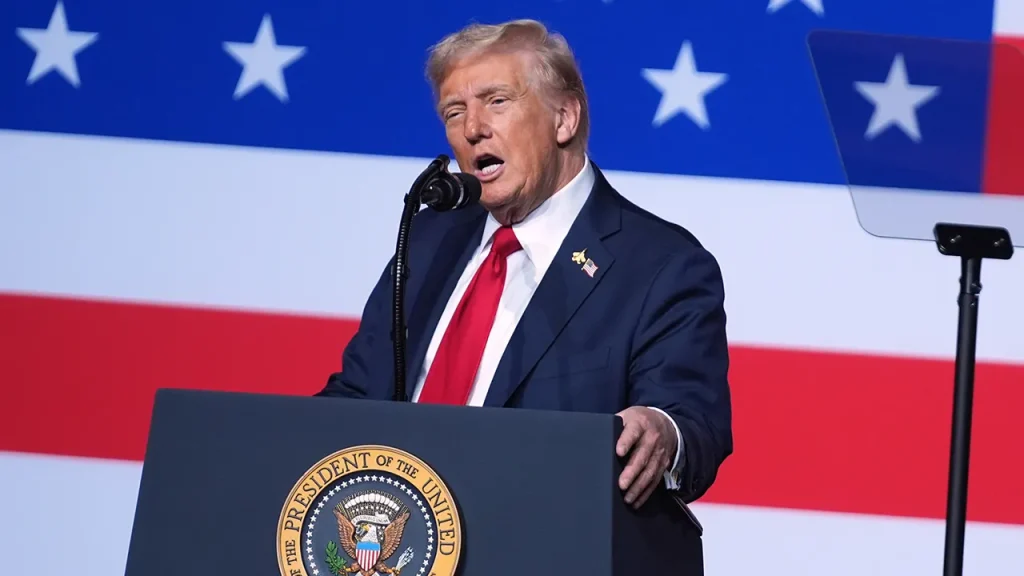The Redistricting Chess Match: How Both Parties Are Battling for Congressional Control
Missouri recently became the second Republican-controlled state to redraw congressional districts ahead of the 2026 elections, highlighting an intensifying political chess match between Republicans and Democrats with control of the House of Representatives at stake. Governor Mike Kehoe signed a new congressional map that will likely deliver Republicans an additional seat, following a similar move in Texas. With Democrats currently needing only three seats to regain House control, these redistricting efforts have enormous implications for political power in Washington.
The Missouri redistricting effort received enthusiastic support from former President Donald Trump, who called the new map “FANTASTIC” and celebrated how it would “help send an additional MAGA Republican to Congress.” Republicans currently hold six of Missouri’s eight congressional seats, and this new map aims to strengthen their position further. However, Democrats aren’t accepting these changes without a fight, promising legal challenges while opponents gather petition signatures to force a statewide referendum on the new districts. This resistance highlights the contentious nature of mid-decade redistricting, which though unusual, has historical precedent.
Meanwhile, Texas Governor Greg Abbott recently signed legislation creating up to five new Republican-leaning districts at the expense of Democrat-controlled seats. These coordinated efforts in Republican states reflect a broader GOP strategy to expand their narrow House majority before the 2026 midterms, when the party holding the White House typically faces losses. Trump and his team are determined to avoid a repeat of 2018, when Democrats recaptured the House during his first term. The redistricting push demonstrates how geographic control translates directly into federal power, with each state’s map potentially determining who controls congressional committees and sets the national legislative agenda.
Democrats are mounting their own counterstrategy, most notably in California where the Democrat-dominated legislature approved a special November ballot proposition that would temporarily bypass the state’s nonpartisan redistricting commission. If approved by voters, this would allow Democratic lawmakers to redraw congressional maps with the aim of creating five more Democrat-leaning districts to offset the changes in Texas. Governor Gavin Newsom, viewed as a potential 2028 presidential contender, is spearheading this effort, framing it as necessary to counter Republican gerrymandering in other states. This tit-for-tat approach illustrates how redistricting has become a nationwide partisan battleground.
The redistricting fight is expanding to other states as well. Ohio missed a deadline to approve a new bipartisan map and now faces a court-mandated redistricting process after its previous map was deemed insufficiently bipartisan. Indiana lawmakers may meet in a special session to redraw districts following meetings between state Republicans and Vice President JD Vance. Florida, now firmly Republican-controlled, is considering new maps with Governor Ron DeSantis calling mid-decade redistricting “appropriate.” Even Maryland Democrats are weighing redistricting options, having introduced legislation allowing mid-decade changes if another state acts first. These developments show how redistricting has become a domino effect, with actions in one state triggering responses in others.
The consequences of these redistricting battles extend far beyond mere partisan advantage. They fundamentally shape representation for millions of Americans, determining which communities share congressional districts and whose voices are amplified or diluted. In Utah, a judge recently ordered the Republican-controlled legislature to draw new maps after ruling lawmakers had ignored an independent commission approved by voters to prevent partisan gerrymandering. This judicial intervention highlights the tension between partisan interests and democratic principles. As both parties maneuver for advantage through redistricting, the ultimate impact will be felt in policy outcomes affecting healthcare, taxation, climate change, and other critical issues that divide along party lines. With control of Congress—and the ability to advance or block a president’s agenda—hanging in the balance, these seemingly technical state-level redistricting decisions may ultimately determine the nation’s political direction for years to come.


